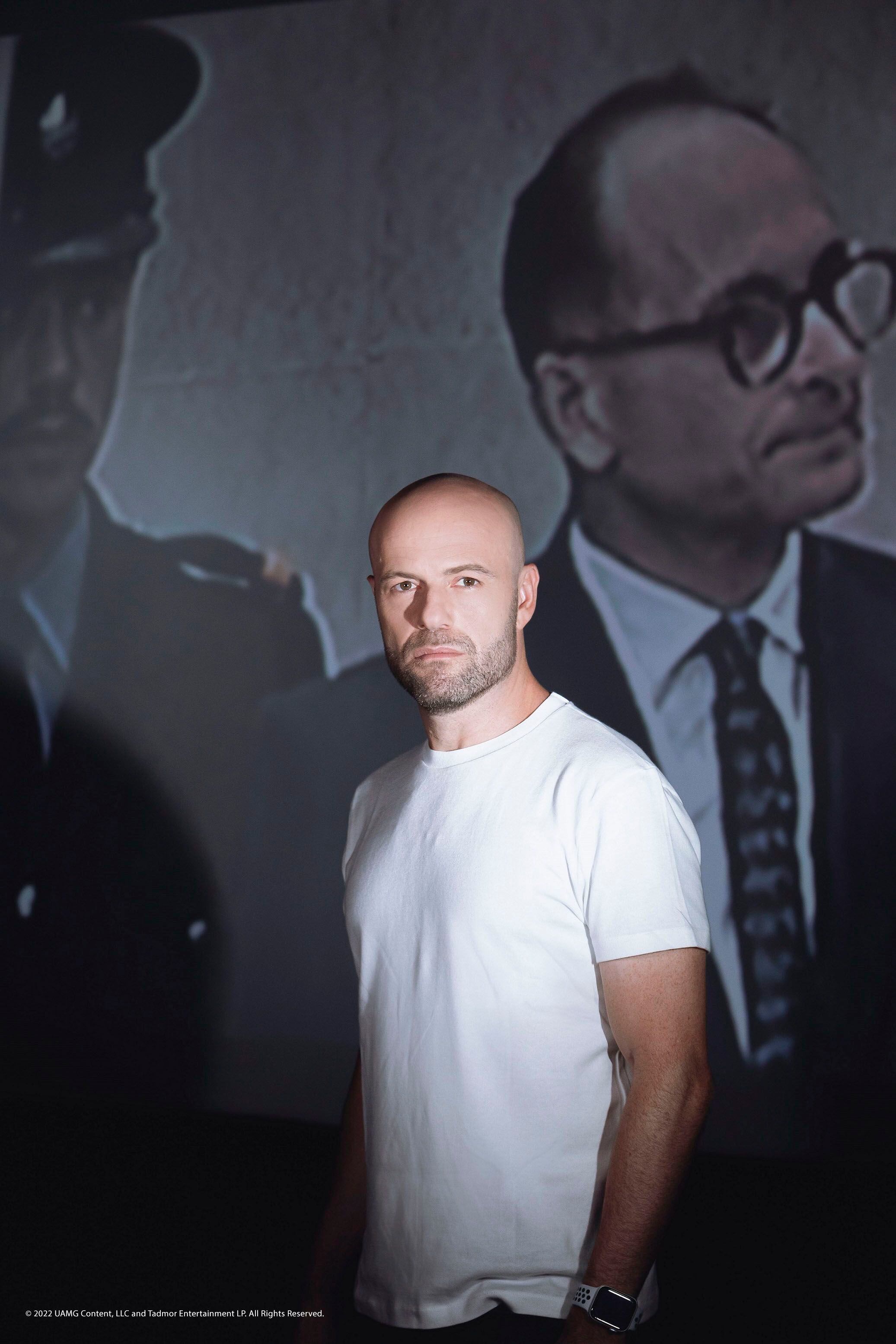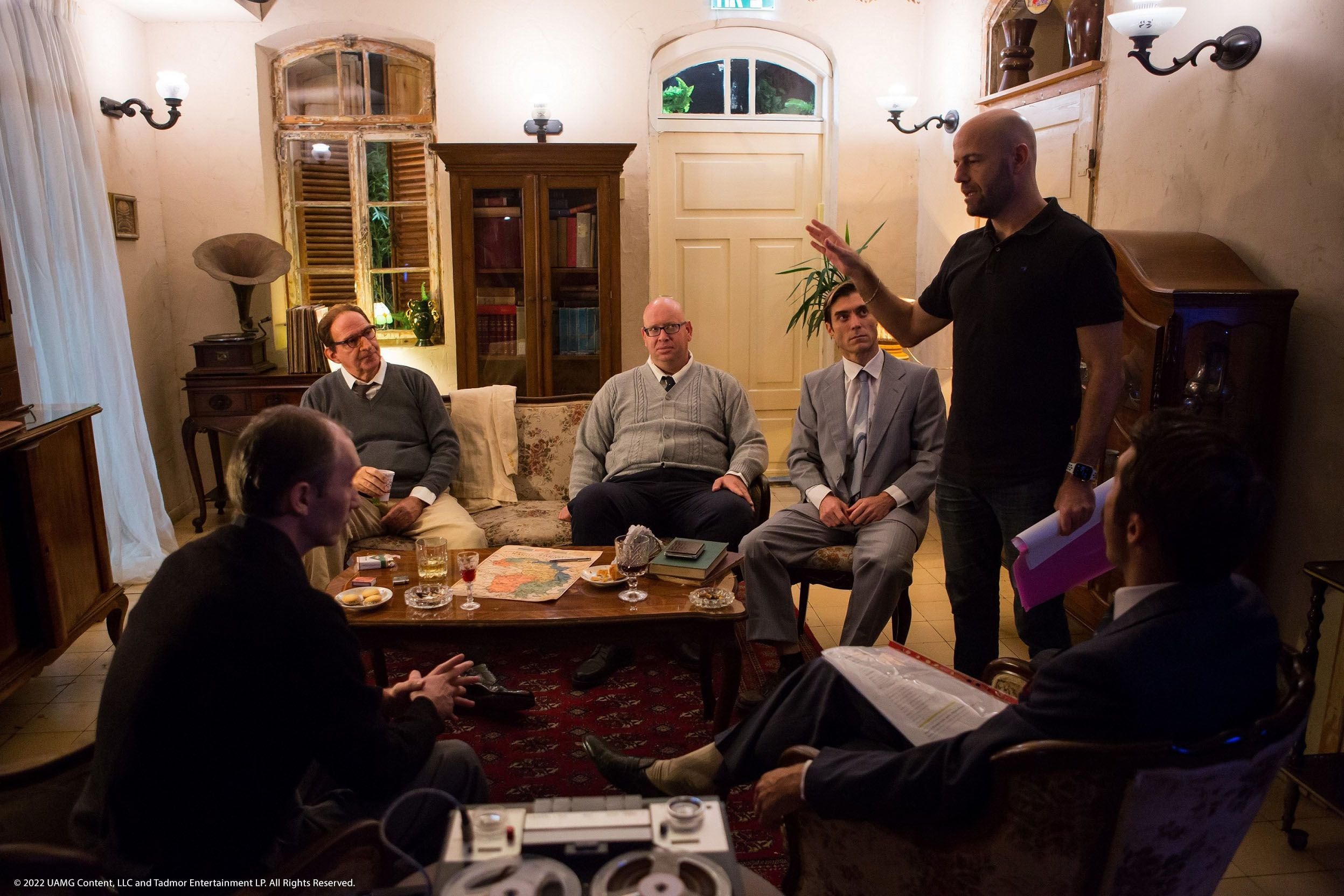On June 1, 1962, he was hanged. Adolf Eichman. His corpse was cremated and dumped in international waters. She was the first and last person to be sentenced to death in Israel. The charges against her? She designed an effective process of annihilation with which the Nazis were able to kill 6 million Jews.
For this reason he was nicknamed the architect of the Holocaust.
READ ALSO: How was the ultra-secret mission to capture the Nazi criminal Adolf Eichmann, the architect of the Holocaust, 60 years ago
The trial against him, held in 1961 in Jerusalem and broadcast on international television, is considered a milestone in Israeli judicial history. The Jews finally had one of the perpetrators of the greatest injury in their history sitting on the bench.
Seeing eichmanHowever, it was hard to imagine that the thin fifty-year-old with the thick glasses was at the same time the mastermind behind that genocide.
Leaning on it, eichman He based his defense on assuring that he was only an official at the service of the Nazi power who limited himself to obeying the orders that came from above.
Of course, that did not explain why different survivors managed to identify him as a key part of the lethal Nazi mechanism. He also did not fit in with his flight to Argentina, where he lived for 10 years under the name Ricardo Klement. Much less would it have justified the effort made by the Mossad, the Hebrew intelligence service abroad, to catch him and extradite him to Israel a year before the trial.
But almost every story ends up finding a willing ear. In the case of Eichmann, it was that of Hannah Arendt, sent by “The New Yorker” to cover the trial, who ended up developing the Theory of the Banality of Evil, according to which many Germans carried out the orders given to them by the Nazis without imagining that They collaborated with the extermination.
In the end, nothing could save Eichmann from hanging, but the truth is that the idea that his role had been irrelevant in the Holocaust ended up being installed in more than one person.
“I grew up hearing that Eichmann had been a simple bureaucrat who followed orders, but he understood Nazi ideology, he was a supporter of it and he did more than was asked because he wanted to show how devoted he was.”, explains the Israeli filmmaker Yariv Mozer, during a videoconference offered to a group of Latin American media, including Trade.
“He knew that the tapes would change the image of Adolf Eichmann that was formed after his trial”, adds the award-winning director.
The tapes to which Mozer refers are the 28 hours of recorded interviews that Eichmann and the Dutch journalist Willem Sassen had during the Nazi exile in Argentina.
These recordings, which were believed to be lost, were recovered by Mozer and from them he made a three-episode documentary in which Eichmann’s true face can be seen.
On Monday the 10th, a few days after Yom HaShoah, DirecTV premiered the first chapter of “The Devil’s Confession: The Lost Eichmann Tapes” (The Devil’s Confessions: Eichmann’s Lost Tapes, in Spanish), the same one that is available on OnDIRECTV and DGO.
MYTH OR REALITY?
Sassen, born in the Netherlands, was a collaborator with the SS during the Nazi regime. In addition to being a well-known presenter for the German military radio, he worked as an actor. After the war, Sassen began to be wanted by the Dutch and Belgian courts, for which he decided to flee to Argentina.
During his stay in the South American country he was able to meet Eichmann. Interested in his role in the so-called Final Solution, Sassen asked him for an interview.
“What we know based on our investigation is that the Argentine regime was practically looking for Nazis because it knew they would bring money into the country, they had ties to Europe and influence. They were people who could contribute to the dictatorship of that time (the so-called Liberating Revolution). It was a mutual understanding. There are photos of Eichmann at Nazi events with representatives of the dictatorship, there was a connection between the two at that time”, comments Mozer in this regard.
According to the director, this comfort led Eichmann not only to decide to move his wife and children to Argentina, but also to decide that the children should keep their original surname. This confidence, Mozer believes, also led him to agree to the interview.
“Eichmann was looking for the credit he thought he deserved for what he did, recognition, someone to thank him for what he did for the Germans, for the Nazis, that he had succeeded, that he was the person behind this lethal machine. He felt the need to tell his story. It is no coincidence that Sassen was successful in interviewing and recording him.” comments the filmmaker.
The first news that exists about these tapes dates back to 1960, when Eichmann was arrested. So, Sassen decides to sell the transcript of the conversations to LIFE magazine.
Since then, the tapes have disappeared. Or so it was thought.

ON THE TRAIL OF THE TAPES
In 2020, a producer told Mozer about the existence of the tapes, albeit warning him that it could be a simple myth. The filmmaker began to investigate, discovered that Gideon Hausner, the trial prosecutor, had written a book and had given a copy to his grandfather. He read the book and found a reference to the tapes. They were not a myth and he set out to find them.
A year of investigations led him to discover that they were in the possession of an anonymous owner but that he was represented by the German National Archives. They began an arduous round of negotiations that, after several comings and goings, came to fruition. So, finally, Mozer got the tapes.
“The fact that you can hear, for example, the fly in the first scene of the show and Eichmann saying ‘it’s a Jewish fly, you have to kill it’ (…) he always complained that if the Nazis had more like Eichmann they would have Completed his job, he says: ‘I regret that we didn’t kill 10 million as planned and we only did it with 6 million’”, are some of the things that most impacted the director.
For this reason, he decided to keep the audio on the tapes original in the documentary, having his actors dramatize the scene and match the movement of their lips to the sounds played above them.
“Eichmann is the devil and evil. He is considered the ultimate evil in Israel. Just as the Holocaust is our nation’s greatest trauma, he was considered the ultimate evil, a demon. One of the things that our documentary does is that it debunks Hannah Arendt’s theory that he was a small cog in the Nazi machine. And also that executing it was the right decision”, adds Emilio Schenker, executive producer of the documentary.

A COMPLETE PICTURE
Filming lasted for a year and a half. Funded by Metro-Goldwyn-Mayer (MGM), Mozer’s team recorded in Israel, Germany, Poland, Hungary and Argentina.
Over 30 interviews, countless hours of recording, and a pandemic later, his work finally saw the light of day in mid-2022.
—What caught your attention the most from the original recordings?
Hearing the background noises, those elements within the dialogue that let me know they were authentic. Hearing smoking, wine being served, or Sassen’s wife coming in and telling Eichmann that she couldn’t find cigarettes in the store. That made me understand that it was part of daily life in Argentina, it was a routine to meet, it was like talking about ordinary things. Sassen’s daughter can be heard singing in the background. This happened in a normal house, but they were talking about the murder of millions of Jews during the Holocaust. That is more terrifying than the actual content of the recordings, understanding that it was part of the banalities of her life was shocking to me.
—Do you think the documentary will change the public’s perception of Eichmann?
Israeli public opinion of Eichmann was against him during the trial and remains so to this day. However, there are those who have read Hannah Arendt’s theory and are those who believe that Eichmann was just a bureaucrat who followed orders in the Nazi regime. In this documentary we show the true face of him, how he tried to show himself at trial and how he actually supported Nazi ideology. Eichmann is more than what people saw at the trial, in that sense I think we did change the way the public sees Eichmann.
—What do you think of Arendt’s Theory of the Banality of Evil?
The banality of evil is a good theory, it explains why most Germans became Nazis. Many did not follow an ideology, but followed orders. Thus they functioned as small useful parts for a great machine. But Eichmann was dedicated to his work. That is why he escapes Arendt’s theory. Of course he is not responsible for the entire Holocaust, but at least 1 million to 2.5 million deaths were due to Eichmann. We can say that with certainty today in large part thanks to the recordings.
—What can you tell us about the figure of Sassen?
Sassen was not a person to trust, he was a Nazi on one side and a journalist on the other. That’s why you don’t hear him criticize Eichmann, he enjoys listening to it and at the same time wants to know the story because he understands that he has value that he can later sell. He betrayed Eichmann and sold his article to LIFE magazine (when Eichmann was arrested).
Source: Elcomercio
I am Jack Morton and I work in 24 News Recorder. I mostly cover world news and I have also authored 24 news recorder. I find this work highly interesting and it allows me to keep up with current events happening around the world.

:quality(75)/cloudfront-us-east-1.images.arcpublishing.com/elcomercio/CQRQAGSKWBEWDOUVCE3JF7OIUM.jpg)


:quality(75)/cloudfront-us-east-1.images.arcpublishing.com/elcomercio/4BYUTTL6VVGJJHRAWBMTDQJ4TM.jpg)


